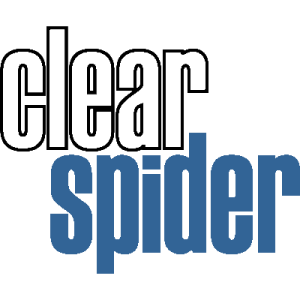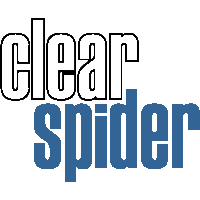Glossary
Common inventory management terms and what they mean.
A
Allocated/Allocation
The specific number of inventory items used to fulfill current orders. Allocated stock is removed from the current inventory available to fulfill additional incoming customer orders.
API (Application Programming Interface)
An interface or communication protocol between a client and a server intended to simplify the building of client-side software.
ASN (Advanced Shipping Notification)
A document that provides details about a pending customer delivery. Its purpose is to notify.
Available
Refers to the status of inventory as it relates to its ability to be sold or consumed.
B
Back Order
Represents items on a sales order that have not been picked, or items on a purchase order that have not been received.
Barcode
Print medium used for scanning data into our system.
Barcode Scanner
This is a hardware component (mobile device or unit that connects to a PC) that is used for scanning barcodes.
Batch Picking
Order picking method where orders are grouped into small groups or “batches”. All orders within the batch can be picked in one pass.
Billing
Billing is used in outgoing orders to invoice the customer for the parts provided plus any additional charges such as tax or freight costs.
Bin Location
A specific location identifier of a slot in a warehouse.
BOM (Bill of Material)
A list of the raw materials, sub-assemblies, sub-components, parts, and the quantities of each needed to manufacture an end product. A BOM may be used for communication between manufacturing partners or confined to a single manufacturing plant.
Bullwhip Effect
When there are large inventory variances seen as you move up the supply chain from the end customer to the initial provider. Miscommunication and each organization acting in self interest are the most common causes of these variances.
C
Carrying Costs
Refers to the total cost of holding inventory. This includes warehousing costs such as rent, utilities and salaries, financial costs such as opportunity cost, and inventory costs related to perishability, shrinkage and insurance.
Consignment Inventory
Inventory that is in the possession of the customer, but owned by the supplier.
Cost
The financial impact associated with purchasing new stock, maintaining old stock, or disposing of stock past its shelf life.
Cost of Goods Sold
The total cost of production of products sold during a specific period of time.
Customer Managed Inventory
Clear Spider allows the customer to manage specific inventory and request re-supply from their supplier based upon predetermined re-supply parameters. The Customer manages the suppliers’ parts and provides visibility to the supplier so the supplier can issue the required inventory to the required stock location(s) at the right time.
Cron Job
Cron is a Linux utility which schedules a command or script on your server to run automatically at a specified time and date. Specifically, a cron job is the scheduled task.
Cycle Count
An inventory auditing procedure where a small subset of inventory is counted on a specified day. Cycle counts provide an ongoing measure of inventory accuracy and can be tailored to focus on items with higher value, higher movement volume, or items that are critical to business processes.
E
EDI (Electronic Data Interchange)
The concept of businesses electronically communicating information that was traditionally communicated on paper, such as purchase orders and invoices. Technical standards for EDI exist to facilitate parties transacting such instruments without having to make special arrangements.
Expiration Date
An expiration date or expiry date is a pre-determined date, after which an item is no longer viable and should no longer be used. This is based on either the anticipated shelf life for perishable goods or by operation of law.
Export
The process of taking data and information out of the Inventory System for use by an external system.
F
FIFO (First-in First-out)
First-In, First-Out, is an inventory costing method used to track the cost of inventory that is sold by assuming that the first product purchased is the first product sold. Hence any inventory that is stocked first will be the first used to fulfill an order.
Fixed Location
A specific place in the warehouse where a part will be stored. This location can be used for putaway, picking, and replenishment. In Clear Spider, this field value is for descriptive purposes only.
Forecast
A number that indicates an estimate of the number of items that will be consumed each month. This value is for documentation purposes only.
I
Inbound
Direction of product flowing into the warehouse.
Inbound Lead Time
The amount of time in days that it takes to have this particular part delivered from the supplier.
Inspection
Used either on an incoming purchase order or a production order. It gives the user the ability to report the results of inspection of the parts receiving by inputting the number or parts accepted and the number of part rejected.
Inventory
Represents the items in stock. It can also be used to imply the physical counting process.
IP Address
Network address for a given handheld or a workstation PC’s internet connection.
Issue
Used in production orders to supply the order with the required material to produce the end product.
Item
An individual article or unit in the system represented by a product or part number.
K
Kanban
Replenishment system where a replenishment is triggered by emptying a container, and the empty container is sent up the line to the previous operation or supplier to be refilled.
Kitting
Process in which individually separated but related items are grouped, packaged, and supplied together as one unit.
L
Lead Time
Amount of time required for an item to be available for use from the time it is ordered.
Level
A term that refers to the physical positioning of a shelf location.
License
A legal instrument that governs the use or redistribution of software.
LILO (Last-in Last-out)
An accounting method for picking inventory in which the last items to be purchased or produced are sold first.
Line Item
Used to describe the specific order detail (i.e. an item and a quantity) on sales orders or purchase orders.
Location
Precise place where a product is stored.
Lot Control
The process of using procedures (such as assigning lot IDs, expiration dates or tracking parameters) for each lot or batch moving through a system.
Lot Number
An identification number assigned to a quantity or lot of items from a single manufacturer. Typically found on the outside of the packaging.
Lot Size
Lot size represents the quantity of an item you order for delivery on a specific date, or manufacture in a single production run.
M
Maximum Inventory
The maximum number of units that the company desires to maintain in inventory at any point in time. This parameter is considered if the Reordering Policy is set to “Maximum” and will be used in conjunction with other inventory parameters to calculate a reorder quantity to bring the inventory level back to the maximum quantity.
Maximum Order Quantity
The maximum number of parts that will be ordered on a given replenishment order generated by the Replan function of the system.
Minimum Inventory
The minimum number of units that the company desires to maintain in inventory at any point in time. It is necessary that inventory should not go below this level. This parameter is considered if the Reordering Policy is set to “Minimum” and will be used in conjunction with other inventory parameters to display graphs of the status of the inventory for the item.
Minimum Order Quantity
The minimum number of parts that will be ordered on a given replenishment order generated by the Replan function of the system.
MSRP
Manufacturer’s suggested retail price
Move
The process of transferring items between locations.
O
Order Cycle
The order cycle is the processes the line items in an order go through to complete the assigned workflow. As an example, in Clear Spider a typical order cycle could have the steps Pick, Pack, Ship, Bill.
Order Multiple
A factor used in the Replan function to generate replenishment orders. The Order Multiple value will cause the quantity to be ordered to round up to the next multiple. For example, if the order multiple is 10 and the quantity needed is 75, the Replan function will order 80 units of the part; if the order multiple was 6 and the quantity needed is 75, then the Replan function would order 78 units.
Outbound
Direction of product flow leaving the warehouse.
Outbound Lead Time
Outbound lead time is the total time it takes for customers to receive their order (includes the time to receive, process, and ship items to the customer).
Outsourcing
The act of transferring responsibilities for a process to an outside supplier.
Overhead
Indirect costs associated with facilities and management that are applied to the costs of manufactured goods through the manufacturing reporting process.
P
Package Tracking Number
Package tracking numbers are the numbers given to orders when they are shipped. In Clear Spider, this field is an open text field that can carry any value that the user wishes. For example, an inbound order could carry the tracking number issued by the shipping company.
Packing List
A document that is printed after the picking process is completed. It contains descriptive information such as quantity, description, and weight of the contents. It is prepared by the shipper and sent to the consignee for accurate tallying of the delivered goods.
Pallet
A physical platform designed to allow a forklift or pallet jack to lift, move, and store various loads.
Part Number
Representation of a product numerical form, similar to Item Number.
Part Number References
The system has the ability to reference item data using alternate part numbers which are added and maintained via the Customer References and Vendor References sections of the Create Item and Edit Item screens.
Pick List
A document that is printed for use during the picking process.
Picking
The process of filling a sales order.
PO Cost
Cost field used in the purchasing module of the software.
Portable
Represents a mobile device used to perform warehouse operations like picking, shipping, receiving, etc same as a handheld.
Preferences
This is a module in the software that is used to define user choice.
Print Pack List
This step is used with an outgoing order and can be used to print a packing list that will go with the shipment. The inventory numbers here can vary from the pick list since the number of parts actually picked could vary from the quantity requested.
Print Pick List
This step is used with an outgoing order and when executed will return a pick list, showing all of the parts and associated quantities required to fill the order. Inventory levels at this point remain the same.
Purchase Order
A document used to approve, track and process purchased items. A PO is created when an order is placed to a supplier.
Purchase Order Number
A unique number assigned by your Purchasing Department to each purchase order.
Q
Quantity
Numeric field used throughout the software to represent quantity.
QuickBooks
A popular accounting software package that Clear Spider can integrate with.
QR Code
QR code is a type of matrix barcode that contains information (such as weight or expiry date) about the item to which it is attached.
R
Receipt
Process of receiving products into the location/warehouse.
Receiving
Receiving is typically used in an incoming order. This step reports the number of items being received from the incoming order and allows the system to create a backorder for missing parts.
Reorder Quantity
The number of parts that are ordered on a replenishment order. This order is created by the Replan function, when the reordering policy of Reorder Point is used.
Replenishment
The process of moving inventory from suppliers or other facilities to meet current and future order requirements.
Return Material Authorization (RMA)
Clear Spider allows the customer to return the damaged or defective goods to the supplier to have the products repaired or replaced, and reshipped.
Return on Investment (ROI)
A performance metric used to calculate the benefit of an investment, by evaluating the difference between the amount of money invested, and the amount of money gained in return.
– Calculate your ROI with Clear Spider –
Reverse Logistics
Returns, and activities related to returned product, such as returned material for disposal/recycling.
ROP
Re-order point.
S
Safety Lead Time
Adding some additional time to your lead time as part of your ordering calculations.
Safety Stock
Safety stock provides protection against running out of stock during the time it takes to replenish inventory. It allows the company to maintain customer service levels while at the same time maintaining the minimum level of inventory. The value set here will affect the graphical display of on-hand and available inventory for a part. If these levels are at or below the defined safety stock, the graphical display will be coloured red to indicate a potential serious inventory issue or stock-out.
Sales Order
This term is used to represent the software module where customer orders are entered. It is also used to represent the printed version of that customer’s order.
Scheduling
Scheduling is used in both an incoming and an outgoing order. Once the order has been acknowledged, the order can be reviewed for delivery factors, such as dates, and quantities can be modified as required.
Search Parameters
Set of fields used to search the required data.
Serial Number
Unique identifying value generated by the software. Assigned incrementally or sequentially to an item to uniquely identify it.
Setup Costs
The costs associated with initiating a production run (labour, machine time, etc.).
Setup Time
The time it takes to prepare equipment and materials for a production run.
Shelf Life
Shelf Life is the length of time given to tagged items before they are considered unsuitable for sale or consumption.
Ship To
Field in the database that represents an alternate shipping address for a customer.
Shipping
Process performed after the picking function that signifies that the product has left the facility.
Shipping Agent
This field is the code representing the company that is actually delivering the parts to you. This is a pre-defined list of agents and can be filled in by clicking on the down arrow and selecting the appropriate value from the drop-down list.
SKU (Stock Keeping Unit)
Referring to a specific item in a specific unit of measure, or the identification # assigned to an individual item.
Status
This term is used in the software to determine the condition of an item (i.e. available, allocated, damaged, etc.).
Supplier
One who provides something needed such as a product or service, most commonly a person or organization.
V
Vendor
Represents your procurement source for products.
Vendor Managed Inventory (VMI)
Clear Spider allows suppliers to manage inventory and re-supply for their customers. Customers relinquish the workload of managing suppliers’ parts in exchange for providing visibility into their inventory levels and requirements.


